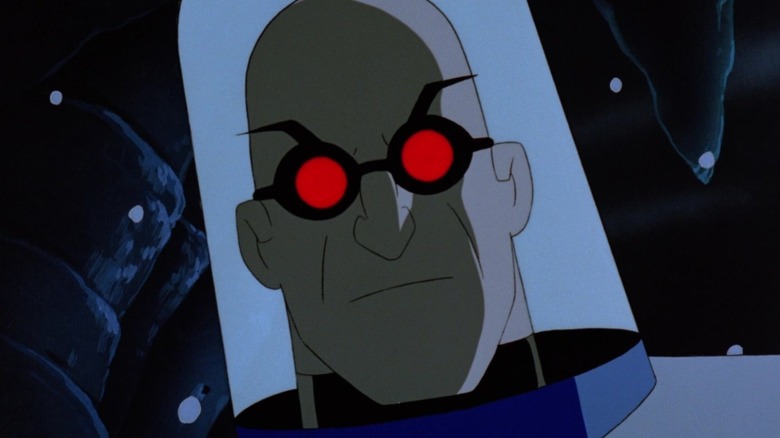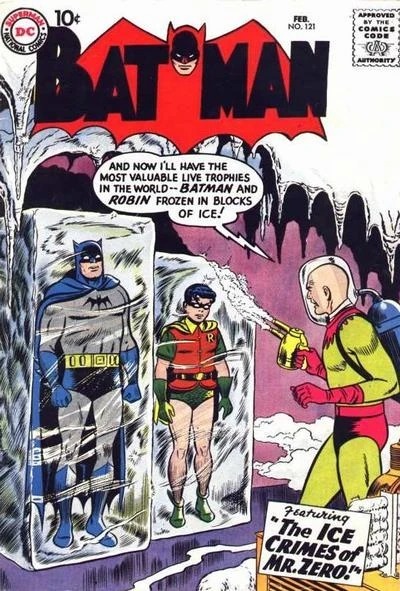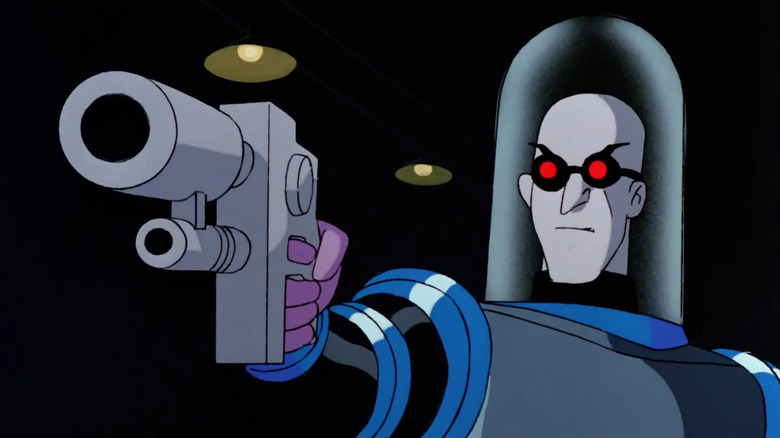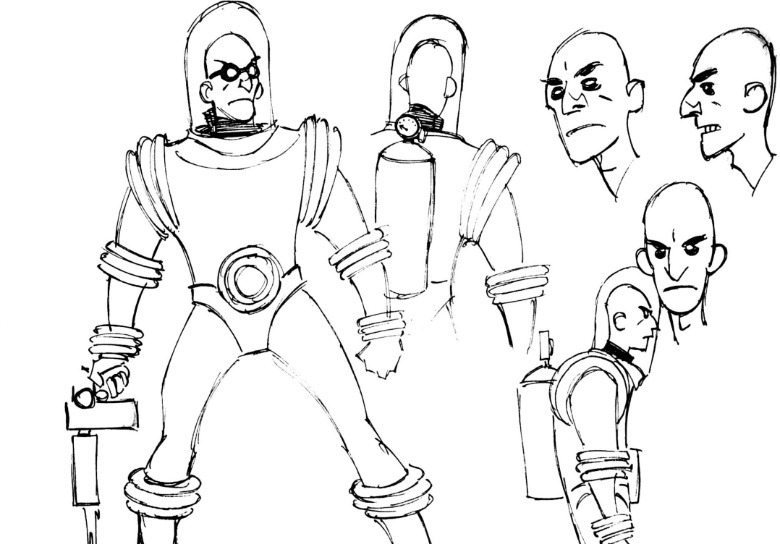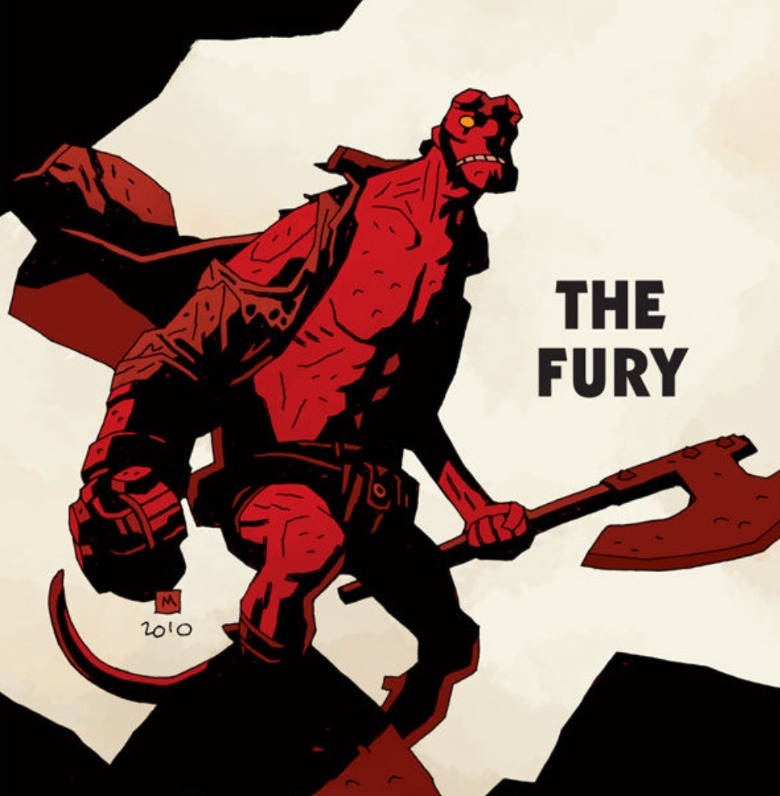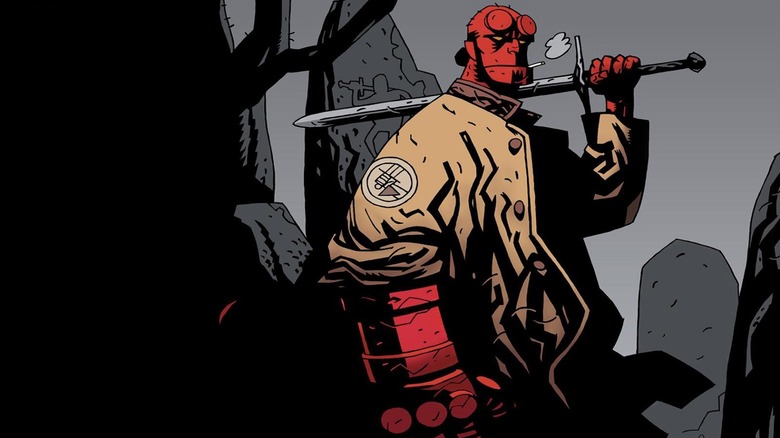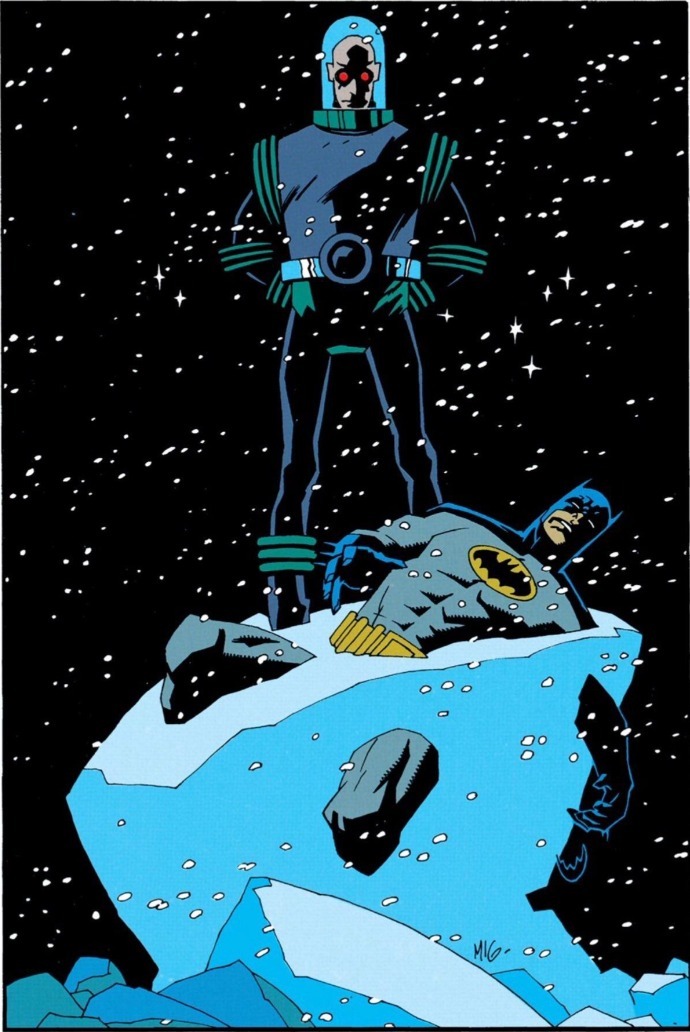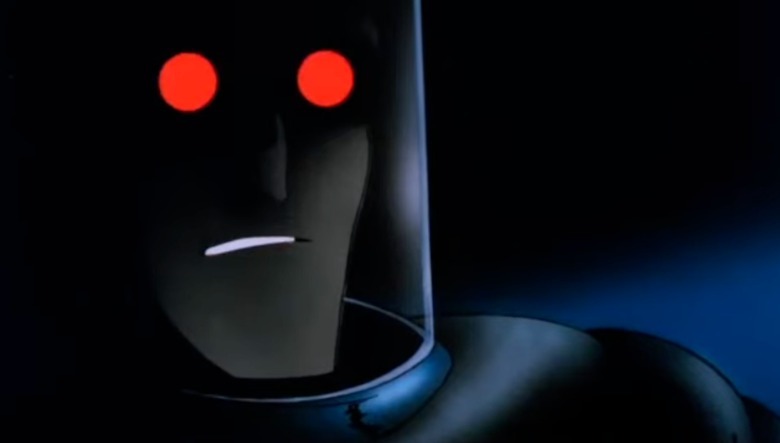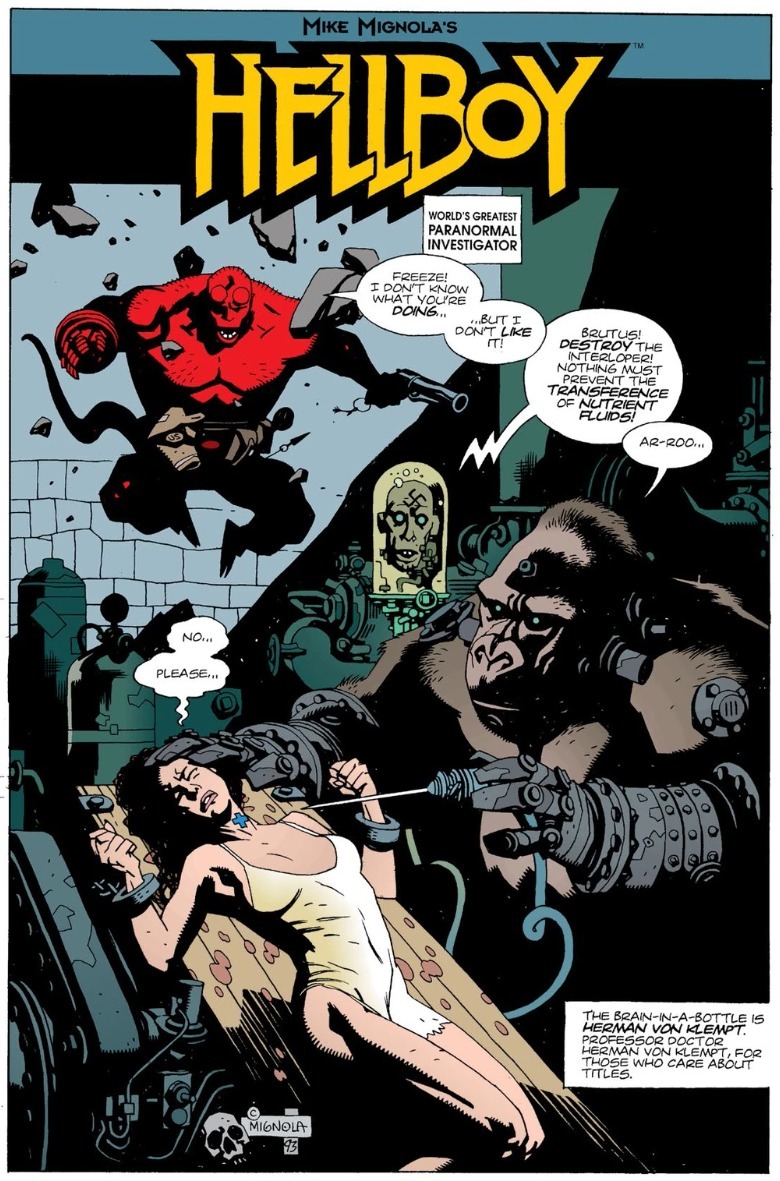Batman: The Animated Series' Mr. Freeze Was Redesigned By A Legendary Comic Artist
We may receive a commission on purchases made from links.
"Batman: The Animated Series" indisputably revitalized Mr. Freeze. He wasn't exactly a forgotten villain before that — he made it into the 1960s "Batman" series, which was actually the first time he was called Mr. Freeze. (His comic debut, 1959's "Batman" #121, referred to him as Mr. Zero.)
But the "Batman: The Animated Series" episode "Heart of Ice," written by Paul Dini, is where Freeze, as Bat-fans know him, began. The episode gave Freeze (voiced by Michael Ansara) a true name, Victor Fries. The '60s show had him named Dr. Schivel, whereas the comics had never given him a pre-supervillain name. That speaks to how little Freeze's backstory mattered, which gave Dini and company room to fill in the blanks. "Heart of Ice" forever changed Mr. Freeze from a generic mad scientist villain into someone driven by vengeance and love for his terminally-ill wife, Nora Fries.
"Batman: The Animated Series" is the definitive Batman for many, and as such has become a reference point for comics and cartoons made since. That means the tragic Mr. Freeze has endured as the default version, in both characterization and design. Before "Heart of Ice," Mr. Freeze's costume had some staples (a glass case helmet, a freezing ray, etc.) but varied widely. His original depiction as Mr. Zero, for instance, had him in a goofy green-yellow and red spandex suit, with a helmet resembling a fish bowl.
The animated depiction of Mr. Freeze had a bulkier and more robotic suit colored various shades of blue and black. That is how Freeze has looked in most "Batman" stories since. Who designed this overhaul? None other than Mike Mignola, creator of "Hellboy."
Before Hellboy, Mike Mignola designed the modern Mr. Freeze
In the early '90s, Mignola had already drawn a few Batman comics (giving him the experience to create Hellboy in 1993). "Batman: The Animated Series" co-creator Bruce Timm commissioned Mignola to redesign Mr. Freeze, and of course he took the job. See Mignola's original black-and-white concept sketch below.
There are subtle differences to the final design; Mignola's sketch is skinnier and has a slouched posture. But where these differences exist, they're minimal. The modern Mr. Freeze was born on Mike Mignola's sketch paper.
But that said, the artist himself doesn't consider that one of his great accomplishments. Kevin Konrad Hanna, co-director of documentary "Mike Mignola: Drawing Monsters," has said to UPI that he asked Mignola about his work designing Mr. Freeze and there wasn't much to tell:
"He's like, 'Oh, that was a single afternoon. I don't even remember doing it.' The whole modern look of Mr. Freeze was because of Mike. For him, it was a single quick sketch that he threw out and let everyone else adapt."
There's a reason Mignola's Mr. Freeze worked so well with Bruce Timm's art style in "Batman: The Animated Series." Timm and Mignola have similar (though definitely not identical) styles. They both draw in the style of Jack Kirby, the 20th century comic book wizard who co-created Captain America, the Fantastic Four, Darkseid and the New Gods, etc. Both Mignola and Timm characters tend to have "skinny legs, and big broad shoulders," as described by television writer Henry Gilroy. Look at Hellboy himself, whose huge upper body is supported by lean goat legs.
How Mr. Freeze fits into Mike Mignola's artistic legacy
Mignola did draw his Mr. Freeze again (this time rendered in full color) as a pin-up page for the tie-in comic, "Batman Adventures."
This drawing reinforces that the most important detail in the "Animated Series" redesign is Freeze's red goggles. It's a strong color contrast with the character's otherwise mostly blue outfit. His eyes being concealed also makes him look more soulless, robotic, and scarier. Note how the first time that Freeze is seen in the opening to "Heart of Ice," he's concealed by shadow. Then, he opens his eyes, and those ominous red orbs stab right through the darkness.
Even 2004's "The Batman," which ditched the goggles, still colored Freeze's eyes as red. One can also easily compare Freeze's goggles to the mask of Lobster Johnson, a 1930s vigilante (crafted in the style of the Shadow) in the "Hellboy" universe. The Lobster dresses all in black, but conceals his eyes behind orange lenses. This makes the Lobster disappear into shadow except for, like Freeze, his eyes.
In general, character design is easily one of Mignola's strengths as an artist. His preference for minimalism helps; his characters have striking and unique features but are unburdened by unnecessary details. No distracting Marvel Cinematic Universe-style line patterns on any B.P.R.D. uniforms, thank you very much. Like any artist as prolific as he is, Mignola's art has recurring motifs, and one of them is things in jars. Compare Freeze's half-oval helmet to the "Hellboy" villain Herman von Klempt, a Nazi scientist preserved as a head in a jar.
Mignola also excels at bridging the divide between character and scenery. He loves to draw statues, and his statue drawings have the eerie feel of standing before a real statue in a church or a graveyard. The more you look at a stone carved like a human being, the more you feel like it's watching you back. With his affinity for statues, many Mignola characters have stone-like texture to their skin. That made him a perfect choice to draw Mr. Freeze, a villain who should look as if he were carved out of solid ice.
